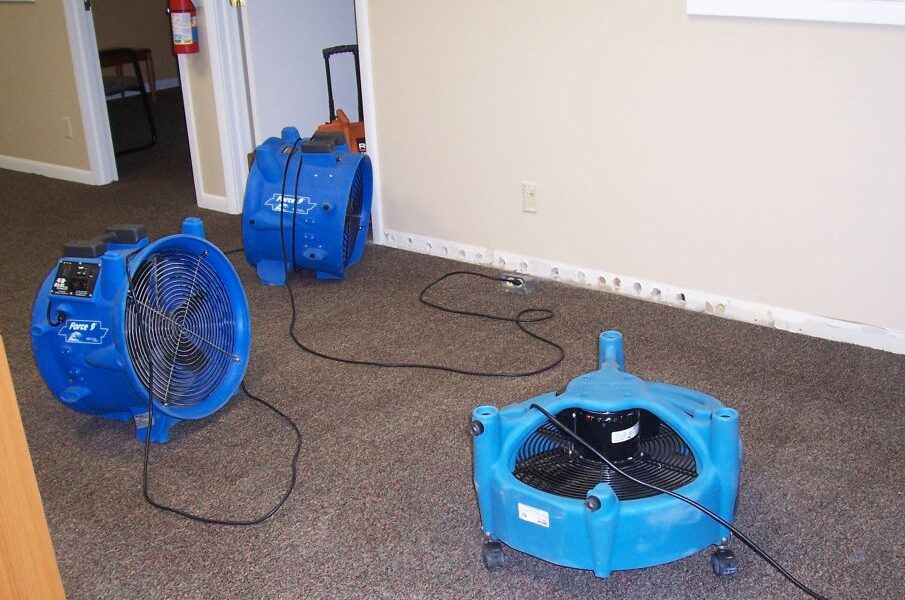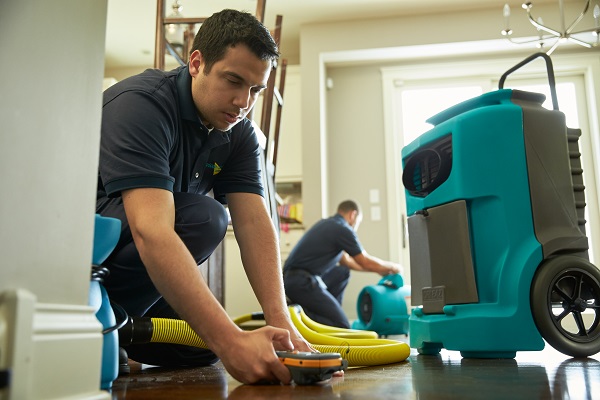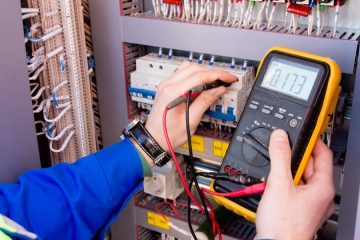Expert Solutions for Water Restoration in North Sound: The Ultimate Guide

Key Takeaways:
- Water intrusion can lead to structural damage, mold growth, and health risks within 24-48 hours.
- Water damage is categorized into three types: Category 1 (Clean Water), Category 2 (Gray Water), and Category 3 (Black Water), each requiring different remediation approaches.
- The impact of water damage can extend beyond visible signs, compromising home integrity, electrical systems, and causing financial burdens.
- Look for certified water restoration services (IICRC, NACHI) and assess their experience and expertise for effective repair.
- Customer reviews and referrals are valuable for selecting reputable water restoration companies.
- Balance cost and quality when choosing restoration services; focus on transparency in pricing and included work scope.
- Advanced drying technologies and eco-friendly solutions are transforming water restoration practices.
- Deciding between restoration and replacement of damaged materials depends on the extent of damage and material conditions.
- Regular home inspections and landscape management can prevent water damage by identifying vulnerabilities and directing water away from homes.
- Creating an emergency preparedness plan for water damage can significantly mitigate risks and enhance home safety.
The Science Behind Water Damage: Understanding the Impact
The Hidden Dangers of Water Intrusion
Water intrusion is often underestimated in terms of its potential consequences for both residential and commercial properties. Water does not simply evaporate; it seeps into materials, leading to structural damage, mold growth, and a host of health risks. When water penetrates walls, floors, or ceilings, it creates an environment ripe for mold and mildew to thrive, which can start to grow within 24 to 48 hours. This is particularly troubling because some molds produce allergens and irritants that can cause significant health issues, particularly for those with pre-existing respiratory conditions, allergies, or weakened immune systems.
Additionally, structural elements such as beams, joists, and insulation can weaken when saturated. Over time, prolonged exposure to moisture can result in warping, rotting, or even total failure of these key structural components.
Furthermore, water intrusion can create conditions for pests like termites and other wood-boring insects to take hold, compounding the damage. Understanding the hidden dangers of water intrusion is crucial for all homeowners, as acting swiftly can protect both health and property.
Common Types of Water Damage: Categories Explained
Water damage is categorized into three distinct types, depending on the source of the water and its contamination level: 1. **Category 1 (Clean Water)**: This comes from a clean source, such as a broken pipe or overflowing sink. Although initially not harmful, if not addressed quickly, Category 1 water can become contaminated and turn into Category 2 within 48 hours. 2. **Category 2 (Gray Water)**: This water contains contaminants and could cause illness or discomfort if consumed. Sources include washing machine discharge and toilet overflow (with urine but no feces). 3. **Category 3 (Black Water)**: This type represents sewage or floodwaters containing harmful pathogens. Regardless of the source, Category 3 water requires immediate professional attention, as it poses serious health risks. Understanding these categories is essential when assessing damage and taking the correct restorative actions. Each category necessitates a different approach to remediation, and knowing which category your water damage falls into can inform the type of professionals you need to contact.
The Ripple Effect: How Water Damage Affects Your Home
The impact of water damage extends far beyond just the visible signs of dampness and staining. It triggers a chain reaction that can compromise the integrity of your home. For instance, framing and drywall that absorb moisture may foster mold, ultimately reducing indoor air quality and jeopardizing the safety of inhabitants. In addition, water damage can disrupt your home’s electrical systems. Moisture that infiltrates wires can lead to shorts or even fires, posing severe hazards. Furthermore, the financial toll of water damage can accumulate significantly, as restoration efforts become more extensive when initial issues are allowed to fester. Moreover, the presence of water can damage personal belongings as well. Furniture, documents, and even electronics can be ruined beyond repair. Once water damage is identified, a proactive approach is critical to contain the impact, minimizing not just the physical damage but also the emotional distress and financial burden associated with the recovery process.
Choosing the Right Water Restoration Service: Key Considerations
Certifications That Matter: What to Look For
When seeking water restoration services, it’s essential to evaluate the qualifications and certifications of potential contractors. Look for companies that are certified by recognized organizations such as the Institute of Inspection, Cleaning, and Restoration Certification (IICRC) or the National Association of Certified Home Inspectors (NACHI). These certifications assure you that the technicians have undergone rigorous training and adhere to industry standards.
Additionally, inquire about their experience and expertise in specific areas of water restoration. A robust company will not only engage in restorative practices but will also conduct thorough damage assessments to tailor their approach to your unique situation. This will directly impact the efficiency of their restoration work, ensuring that your property is returned to its pre-damage state effectively.

Customer Reviews: Mining for Genuine Insights
Online reviews and testimonials can provide invaluable insights when selecting a water restoration service. Websites like Google Reviews, Yelp, and Trustpilot showcase real-life experiences from clients who have engaged with the services. Pay close attention to recurring themes in feedback, such as responsiveness, thoroughness of the work, and customer service quality.
Furthermore, direct referrals from friends or family can sometimes yield the most honest assessments, as they speak to a smaller, trusted circle. A company with consistently positive reviews is likely one that values customer satisfaction and invests in the quality of their services, increasing your confidence in their qualifications.
Costs vs. Quality: Finding Your Perfect Balance
Price is often a significant factor in decision-making, but it shouldn’t be the only one. While it may be tempting to select the least expensive option, beware that cutting corners can lead to subpar results, ultimately costing you more in follow-up repairs. Instead, focus on finding a balance between quality and cost. Request detailed estimates from various companies to compare the scope of work included in their proposals.
Transparency in pricing indicates professionalism; therefore, read the fine print to understand what is included and what may incur additional costs later. This will ensure you make an informed choice, allowing you to pursue a restoration service that provides the best value for your investment without sacrificing quality.
Innovative Water Restoration Techniques: What’s New in the Field?
Advanced Drying Methods: Technology’s Role in Restoration
In the realm of water restoration, technology has revolutionized the drying process. Traditional methods often require extensive materials to be removed and replaced, typically prolonging downtime and increasing costs. However, advances have led to the development of specialized equipment that promotes faster, more effective drying while preserving more of your property.
High-capacity dehumidifiers and air movers, for example, work in tandem to remove moisture from the air and surfaces rapidly. Infrared cameras are used for advanced moisture detection, allowing inspectors to pinpoint trouble spots hidden behind walls or under floors, which could otherwise go unnoticed in traditional assessments. Being aware of these methods highlights the sophistication of water restoration services and emphasizes the importance of hiring professionals who utilize state-of-the-art technology.
The Power of Eco-Friendly Solutions in Water Restoration
Amid growing environmental concerns, the demand for eco-friendly options in water restoration is surging. Many companies are adopting green methodologies without sacrificing efficacy in their services. Using biodegradable agents for mold removal and sustainable practices for waste disposal not only reduces the carbon footprint but also ensures the health and safety of your home environment.
Moreover, some innovative companies are utilizing energy-efficient equipment to minimize power consumption during the restoration process. This trend reflects a commitment to not only restoring properties effectively but also being mindful of environmental consequences, aligning with the values of an increasingly eco-conscious public.
Restoration vs. Replacement: Making the Right Call
One of the toughest decisions homeowners face in the aftermath of water damage is whether to restore or replace damaged materials. Restoration usually entails repairing existing elements, which can save time and money, while replacement often involves complete removal and installation of new materials. The choice depends on several factors, including the extent of the damage, the materials involved, and the age or condition of the items prior to the incident.
For instance, if drywall is submerged but structurally sound, it may be salvaged using advanced drying techniques. Conversely, if expensive hardwood flooring has buckled and is beyond repair, replacement would be necessary. Consulting with experienced water restoration professionals is critical in this decision-making process. They will assess the damage and advise you on the most cost-effective and efficient solution, ensuring you make an informed choice that aligns with both your aesthetic desires and financial considerations.
Preventative Measures: Safeguarding Your Home Against Water Damage
Proactive Steps: Home Inspections and Maintenance Tips
The best way to deal with water damage is to prevent it from occurring in the first place. Regular home inspections can identify vulnerabilities before they become significant issues. Check for signs of leaks in plumbing, inspect roof conditions, and assess the integrity of your foundation for cracks that could allow water ingress. Moreover, regularly maintaining your home’s landscape can prevent water from pooling around your property.
Ensure that gutters and downspouts are clear of debris, directing water away from your foundation. Investing in preventative measures not only enhances your home’s longevity but provides peace of mind that you are taking steps to protect what is likely one of your most significant investments.
The Role of Landscape Management in Flood Prevention
Thoughtful landscape management plays a pivotal role in preventing water damage and flooding. By employing techniques such as grading your yard to direct water away from the home and planting vegetation strategically to absorb excess rainfall, homeowners can significantly reduce the risk of water accumulation around their property.
Additionally, consider incorporating rain gardens or swales, which help manage stormwater runoff. These features can filter and slow down water, allowing it to percolate into the ground rather than pooling near your home. Good landscape management not only helps prevent water damage but can also enhance your property’s aesthetic value and increase its overall worth.
Emergency Preparedness: Creating a Water Damage Action Plan
In the face of possible water emergencies, having an action plan can make all the difference. Begin by developing a response plan that includes vital contact information for your water restoration service, insurance company, and local emergency services. This level of preparedness allows you to act quickly, reducing the extent of damage sustained.
Additionally, practicing effective communication with family members about your emergency response plan ensures that everyone knows what to do in case of water intrusion. Keeping important documents and valuable items in waterproof containers or elevated areas can further safeguard against unexpected flooding. A proactive and prepared mindset significantly mitigates risks, enhancing the overall safety and security of your home. In conclusion, understanding the multifaceted nature of water restoration in North Sound not only empowers homeowners but also equips them with the knowledge to make informed decisions. From understanding the science of water damage to selecting the right restoration service and implementing preventative measures, this comprehensive guide serves as a cornerstone for any homeowner looking to protect their property from the ravages of water intrusion.











